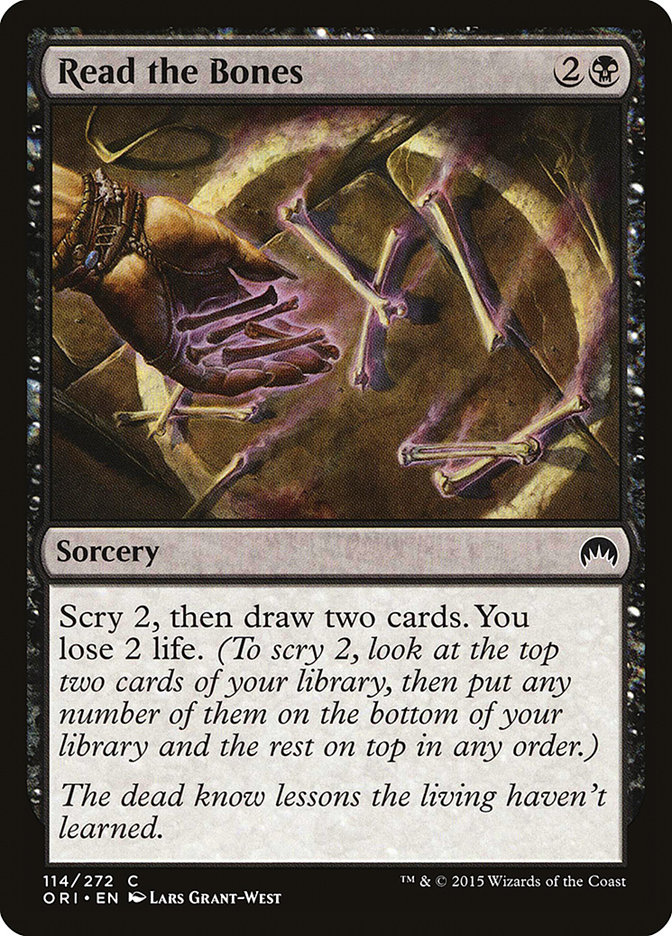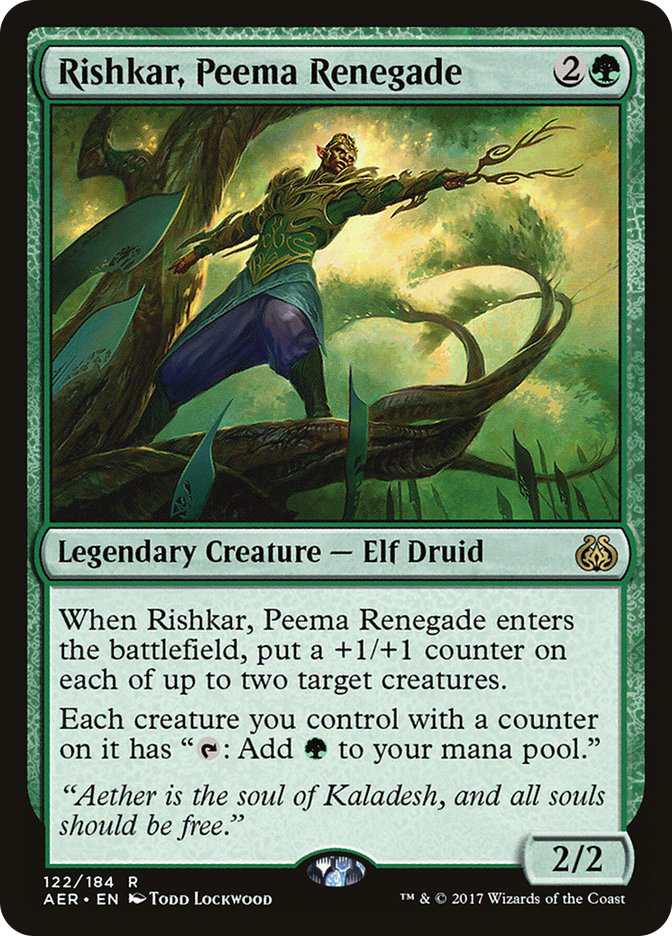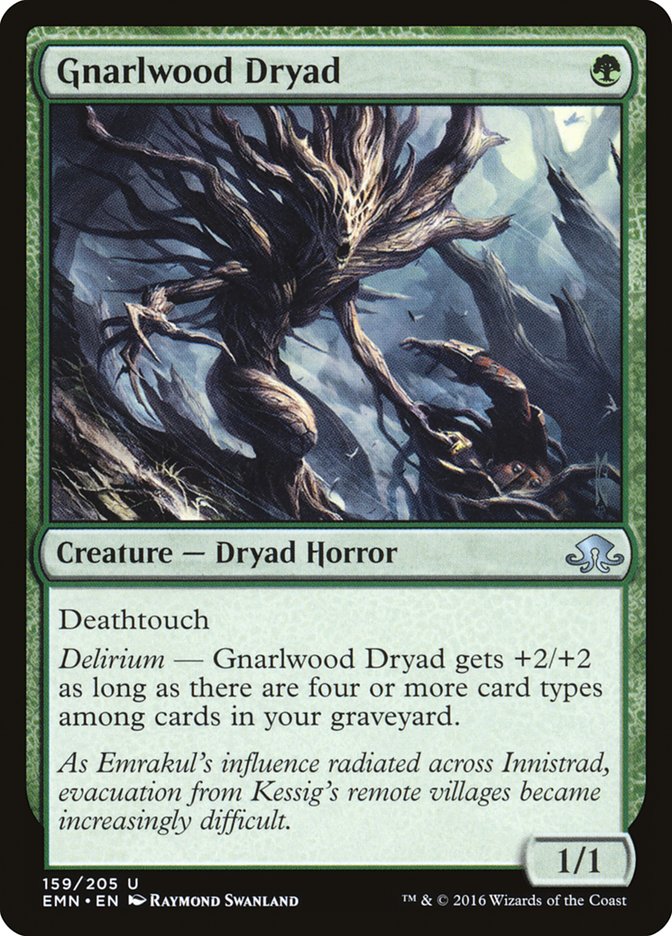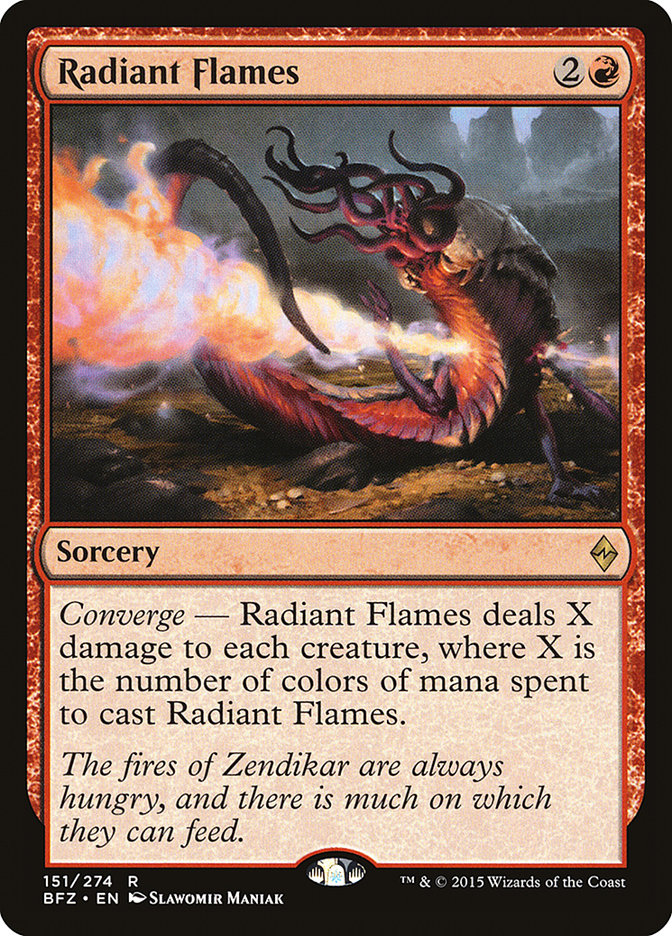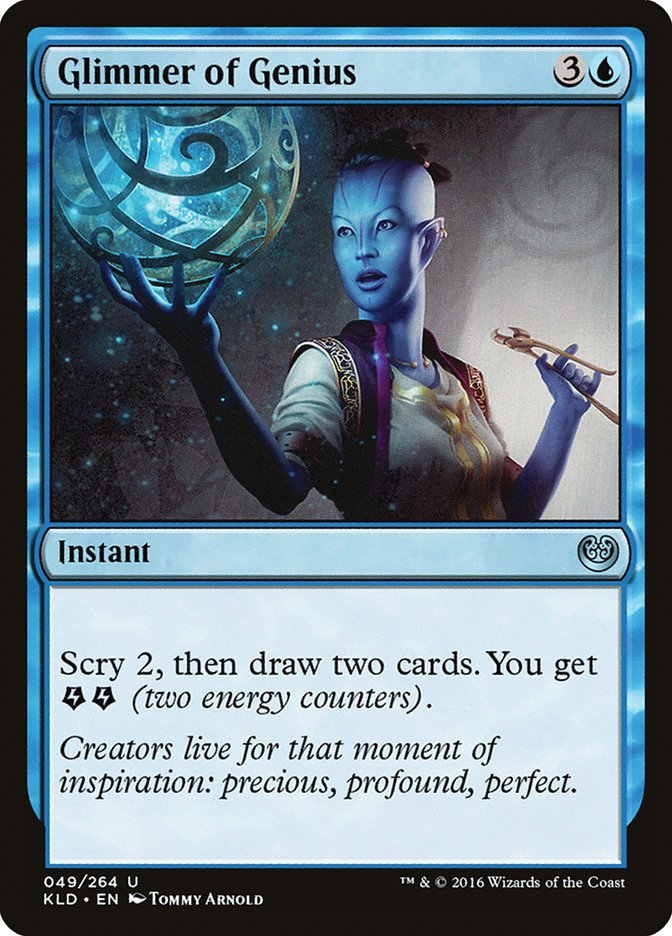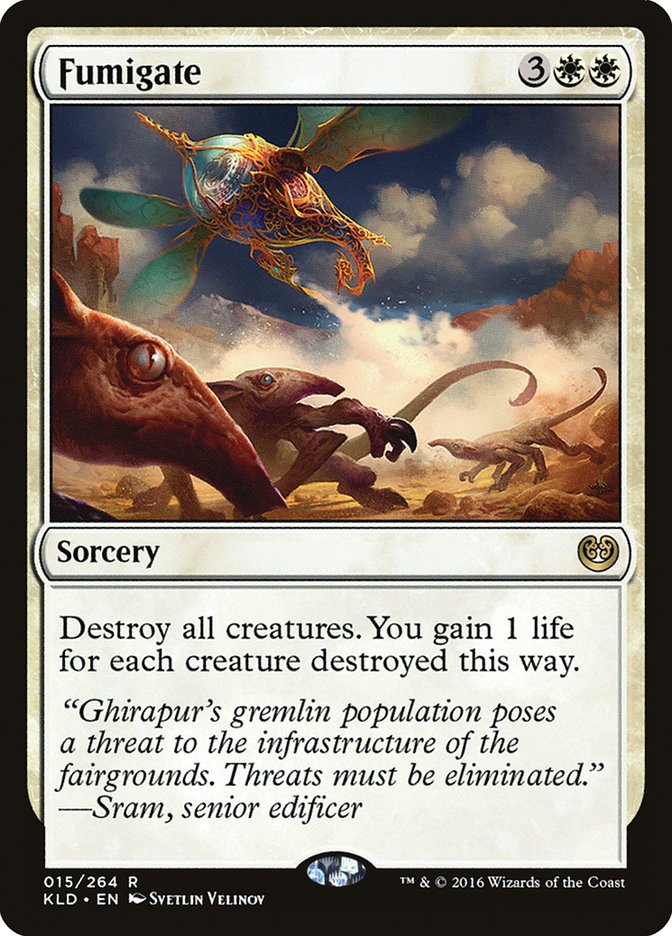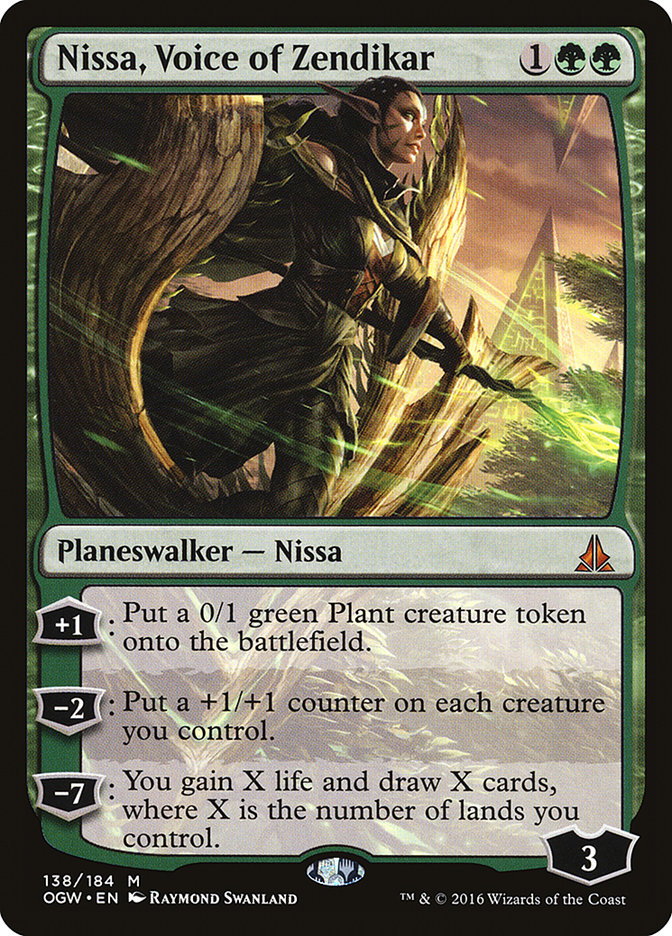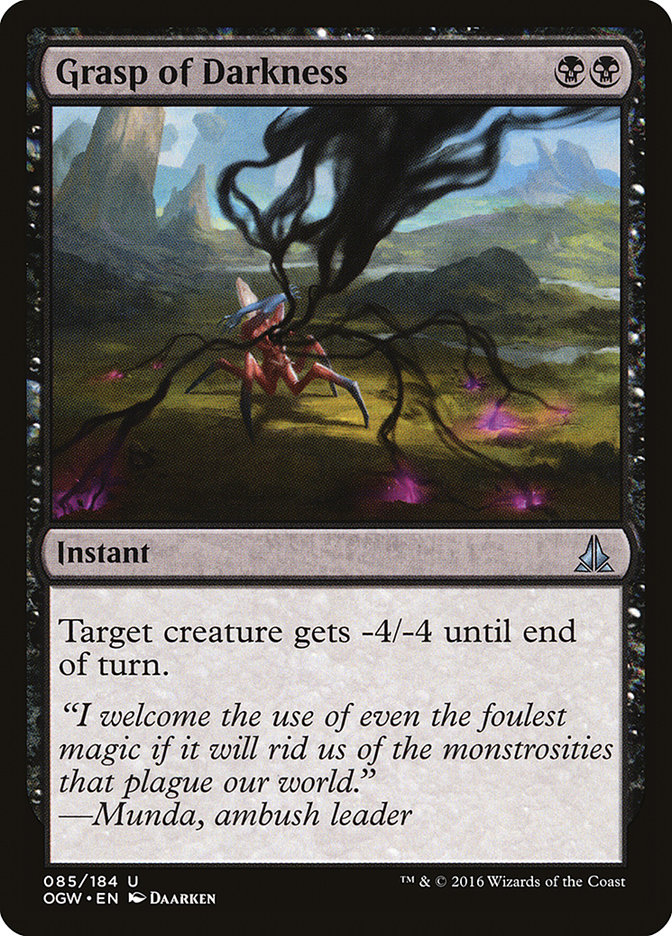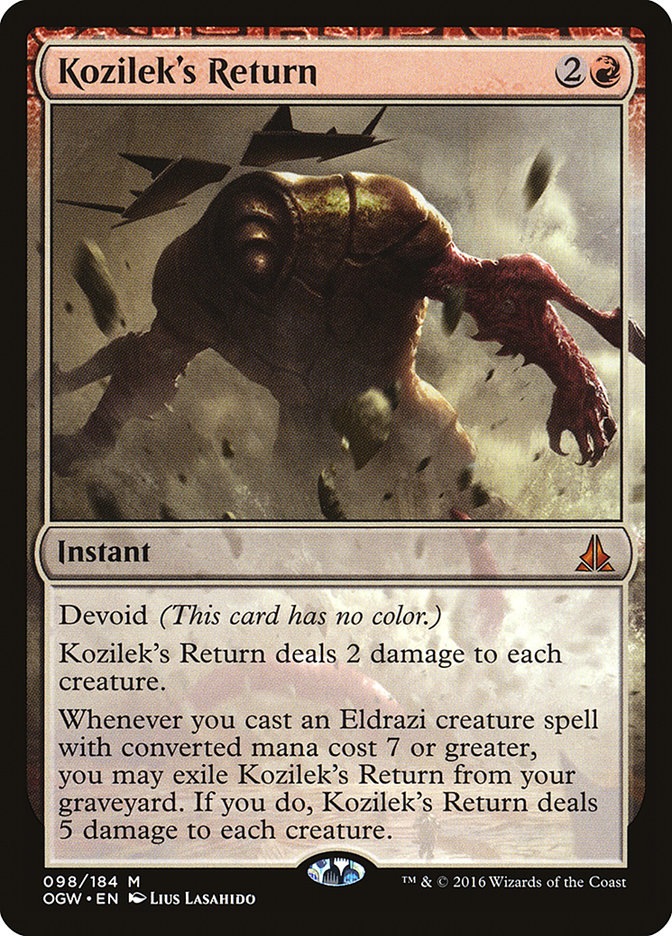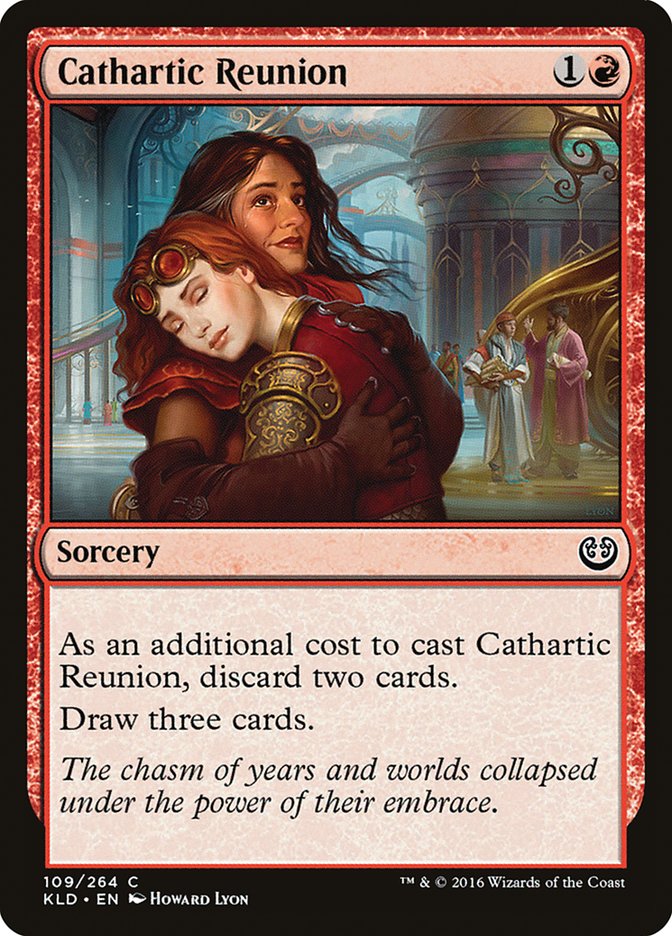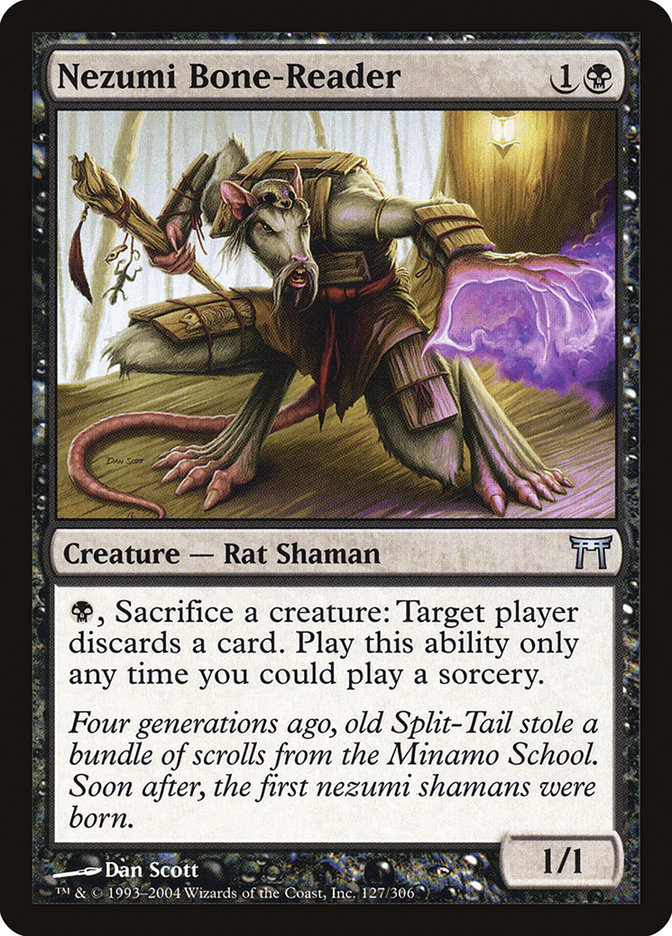Six rounds of Swiss play, two tough single-elimination matches, and a brutal Game 1 have come and gone in a flash. You now find yourself in Game 2 of the finals of this PPTQ, your back up against the wall. You lost Game 1 when you went for your combo too early, jamming Felidar Guardian right into their Grasp of Darkness. And now, in Game 2, you’re in basically the same spot, combo in-hand, staring down two untapped Swamps. It all comes down to this.
Do they have it?
Deducing what cards your opponent has in their hand is an integral part of Magic. Sadly, it’s also a part of the game that we don’t talk about a ton. Many players rely on body language and intuition for their reads, taking an approach that is very valuable to those well-versed in picking up on non-verbal cues. For those of us not so well-versed, however, this method of reading opponents can be very frustrating, as it’s uniquely difficult to learn. Hearing players talk about how they went for their combo because their opponent slumped back a little in their chair can be a miserable experience for someone who feels they have no hope of making reads like that.
But fear not, friends. Truth is, body language tells are the diamonds of the reading world: sparkly and shiny for sure, but ultimately incredibly overvalued by the average person. Winning a game because you deduced a piece of critical information from your opponent’s posture may make you feel incredibly smart, but it’s not a reliable method. And honestly, you probably just got lucky and their “tell” was nothing of the sort.
So, what can we do to accurately and systematically develop a picture of what options are available to our opponent? This skill will be more important than ever in the upcoming months of Standard if the Saheeli Rai / Felidar Guardian combo is as powerful as the hype would indicate. Matches will be won and lost at #SCGCOL by the ability of combo pilots to know when the coast is clear to jam, or the ability of non-combo pilots to know when they can safely tap out and progress their battlefield. Combo matchups are Magic at its absolute tightest, where games frequently hinge on the most razor-sharp of edges. One mistake is all it will take to make or break your #SCGCOL. Be ready.
Using the Numbers
If the goal is figure out what cards our opponent has in hand without relying on their body language, there’s no way to get around it: we’re going to have to use some numbers. More than that, we must have a solid understanding of the format and what typical lists look like. If we want to know how likely our opponent is to have a Wrath of God effect, there’s no getting around needing to know how many they have access to. At #SCGCOL this will be particularly difficult, as brand-new Standard formats are always somewhat in flux, but a little bit of research can still pay huge dividends.
Creatures (7)
Planeswalkers (4)
Lands (26)
Spells (23)

Let’s dissect this list of Jeskai Saheeli Brad Nelson proposed in his Premium article last week. Expecting to have every list put forth by an author memorized before battling in a brand-new format is completely unrealistic. However, understanding the general composition of each archetype is doable. The first thing to look at is the interaction, divided into two main categories: point removal and sweepers. For point removal, this list has access to six counterspells and six pieces of point-and-click creature removal. There are four sweepers, split between three copies of Radiant Flames and one copy of Fumigate.
Aside from interactive spells, the most important numbers to remember are those of the power cards, the haymakers. Here we see three copies of Torrential Gearhulk and four copies each of the combo pieces Saheeli Rai and Felidar Guardian. And that’s it! Less than a half-dozen numbers to remember and you will have 95% of the information you need to make informed in-game decisions. That’s very little mental effort to put in for a lot of Magic equity in return. Further, you don’t even have to have those numbers perfectly memorized. This is just a sample list; individual pilots will tweak their decks in all sorts of ways. A general idea of what they have access to is more than good enough.
All right, enough talk of numbers, research, and memorization. How can we profit from our hard pre-tournament work in-game? This is a complicated subject, so we’re going to start with the absolute bare-bones version: a hellbent opponent. When our opponent has no hidden resources, the idea of reading their body language becomes ludicrous: how can we gain information from them that even they don’t have?
Here’s the scenario: you are playing an aggressive G/B deck against Jeskai Saheeli. Late in the game, you have found yourself ahead, with a modest battlefield state of a pair of 3/3s, a Gnarlwood Dryad and a Rishkar, Peema Renegade, staring down a lone Felidar Guardian and an opponent without any cards in hand. The opponent is at nine life, so if nothing changes, you have them beaten two turns from now. The only card in your hand is another Gnarlwood Dryad you drew this turn, which you can cast to represent lethal a turn sooner. Casting the Gnarlwood Dryad is weak to the top card of their deck being Radiant Flames, but not playing it means they get another chance to draw Saheeli Rai and steal the win. What do you do?
Our prior research tells us that they play roughly the same number of Saheeli Rai and Radiant Flames. All other things equal, we’d prefer to give them fewer draw steps to find a card that beats us. So we should deploy the Gnarlwood Dryad and hope they blank for a turn. But what if this were a different reality, where they had access to eight Radiant Flames-esque effects? What if they had twelve? What if they only played two Saheeli Rai? At some point, there’s a combination of numbers where it’s better to hold the Gnarlwood Dryad, and the only way to know what reality you’re in is to do your homework.
Breakpoints
Time to complicate things a bit. It’s simple enough to do some research on the cards in their deck and apply that knowledge when there’s no hidden information, only easily estimated probabilities of drawing specific types of cards off the top. From there, it’s all about comparing our win rate from a given battlefield state to the odds of them drawing the type of card we fear and acting accordingly. But if this kind of prior-knowledge based reading were only useful in super-simplified situations, it wouldn’t be worth talking about.
The beginning turns of a game of Magic are generally the easiest. Both players develop their battlefield according to their gameplan without much credence given to what the opponent may be doing. Eventually, games will reach a point where both players have a somewhat developed battlefield and three to five cards left behind in their hand. In Standard, this mid-game is generally reached around turn 4 or 5. At this point in the game, the three to five cards in each player’s hand can be virtually anything. It’s time to start narrowing down the possibilities.
From the mid-game on, whenever the opponent makes a play that seems slightly suboptimal, make a note of it. Suboptimal plays tell us a lot. When our opponent uses the wrong card to answer a problem you presented them with, it probably means they don’t have the right card in their hand. Even more telling is when they don’t answer a problem at all, despite it playing a critical role in the matchup.
Imagine being on the draw against a Jeskai Control deck. The game has progressed normally; you have managed to stick a Thraben Inspector and a Walking Ballista and are whittling away at their life total with those two, but every other spell you’ve cast has been countered. Meanwhile, your opponent has done control things like cast Glimmer of Genius and make land drops. On turn 6, staring down six untapped lands, you cross your fingers and slam Gideon, Ally of Zendikar. They answer it with yet another Disallow.
What did you learn?
We can now positively say that our opponent does not have a Torrential Gearhulk in their hand. You presented them with the perfect scenario to play it, a chance to flash in a 5/6 to stabilize the battlefield while flashing back a counterspell for the scariest card in your entire deck. Instead, they made the mana-inefficient play of answering the Gideon with a spell in their hand and left the battlefield unanswered. If your opponent made this choice deliberately, they were wrong.
I call moments like these breakpoints. From here on out, every card in their hand is dead to be Torrential Gearhulk. For the purpose of reading our opponent to have Torrential Gearhulk, the game is now identical to the earlier scenario where our opponent was hellbent. We now have a very good estimate of how the chance of them having Torrential Gearhulk increases with every card they draw from here on out, and we can plan accordingly.
Identifying breakpoints is the foundational skill behind reading your opponent. All sorts of breakpoints are possible. Maybe your opponent fails to answer your most important threat right away, or uses a sweeper effect to answer a single permanent of yours instead of trying to maneuver to gain more value. These are all plays that give you vital information about their hand if you are paying attention. As you navigate through games, try to keep a running tally of the types of cards they don’t appear to have. Doing so might be very difficult at first, but keep at it and you’ll find it a very rewarding exercise.
Be careful, though, because different players can have wildly different opinions on what matters in a matchup. If you run across someone who thinks about a matchup differently from how you do, you will find yourself setting inaccurate breakpoints. Take another look at the Torrential Gearhulk example from before. What if our Jeskai Control opponent there thought that card advantage was the key to the matchup? They had cast one Glimmer of Genius; what if, in their mind, the best possible use of their Gearhulk was to Flashback that Glimmer? Then using another counterspell from their hand wasn’t wasteful; it was ensuring that they got to use their Gearhulk in the way they felt was most advantageous.
I get very excited whenever a breakpoint I set in a match of tournament Magic turns out to be inaccurate. When I tell myself that my opponent’s play means they don’t have X card but it turns out they do, what I have in front of me is a chance to learn something. Sure, being wrong in that moment likely lowered my chances of winning the match, and that’s unfortunate. But much more important to me is the opportunity to get better at Magic. Sometimes my approach to the matchup will be better and sometimes my opponent’s is, but both cases allow me to glean a little more insight into the variety of ways people can think about this great game. There’s a natural inclination to get upset when you lose as a result of your opponent doing something you consider to be wrong. Fight that inclination and embrace the chance to learn. None of us know everything.
Practical Applications
Okay! Some cool theory to think about, for sure, and something to work on for your Magic game going forward, but what can it do for you right now, as soon as #SCGCOL? Glad you asked. Let’s dive into a couple of examples of how we can apply breakpoints in Aether Revolt Standard.
We’ll start by playing Brad’s Jeskai Saheeli deck I showed you earlier. Our opponent read the same article we did and is playing another Brad Nelson deck.
Creatures (25)
- 2 Kalitas, Traitor of Ghet
- 4 Verdurous Gearhulk
- 4 Scrapheap Scrounger
- 4 Servant of the Conduit
- 4 Winding Constrictor
- 3 Rishkar, Peema Renegade
- 4 Walking Ballista
Planeswalkers (4)
Lands (25)
Spells (6)

Under intense pressure from our opponent’s aggressive curve of Scrapheap Scrounger into Rishkar, Peema Renegade and Verdurous Gearhulk, we fell all the way down to seven life before managing to stabilize with a Fumigate.
Our opponent has built back up with Nissa, Voice of Zendikar and the activated ability on Scrapheap Scrounger, forcing us to commit a Felidar Guardian as a four toughness blocker to hold black increasingly powerful plant tokens. Things are starting to look dim, but then we finally managed to Glimmer of Genius into a Saheeli Rai. Do we go for the win?
The breakpoint I set here is my opponent not having a removal spell that can deal with Felidar Guardian. Because we were getting a good deal of value out of the Guardian as a blocker, using the removal spell before we went for the combo to clear the path would have sped up their clock considerably. From their perspective, removing the Felidar Guardian early changes our combo needs from Saheeli Rai plus countermagic to Saheeli Rai plus Guardian. Since these are both two-card combinations, it makes sense to just speed up the clock. As such, I would go for the win as the Saheeli player.
Next up, we’re playing the B/G Midrange deck from the last example against this G/R Aetherworks deck posited by Todd Stevens:
Creatures (11)
Planeswalkers (3)
Lands (22)
Spells (24)

It’s Game 3 and our risky keep has worked out, so far since our multiple Scrapheap Scrounger draw did not run into a Kozilek’s Return. Now it’s our turn 5, and we just untapped with a battlefield of Scrapheap Scrounger, Scrapheap Scrounger, Servant of the Conduit. Our opponent’s curve has been unimpressive, turn 2 Woodweaver’s Puzzleknot into turn 3 activating Woodweaver’s Puzzleknot into turn 4 Cathartic Reunion, Woodweaver’s Puzzleknot. They were on the play and passed to us on turn 5 with no play. Should we jam our Verdurous Gearhulk?
In this scenario, when our opponent elected to crack their Woodweaver’s Puzzleknot on turn 3 instead of casting a Kozilek’s Return to gain the huge tempo edge of wiping away two Scrapheap Scroungers, setting a breakpoint and putting their hand dead to contain Kozilek’s Return makes a lot of sense. Using that logic, jamming Verdurous Gearhulk puts a tremendous amount of power on the battlefield and insulates our creatures from the front half of future Kozilek’s Returns and overall just makes a lot of sense.
That being said, the right play here is to not jam the Gearhulk. Breakpoints are all fine and well, but you must recognize when they become outdated. In this example, the moment our opponent cast Cathartic Reunion, it became time to mentally clear every breakpoint we had set. We have no information on any of the three cards they drew off Cathartic Reunion or either of the two normal draw steps our opponent has had since turn 3. Into five unknown cards, I would not feel comfortable presenting my opponent with an opportunity for such a huge tempo gain.
True excellence in reading opponents in Magic is a combination of a deep understanding of the game, including breakpoints, and an ability to decipher their body language. And for real, the former is much more important than the latter. Knowing your opponent is bluffing off their body language means nothing if you don’t understand the matchup deeply enough to know what they are trying to bluff. If you are someone for whom body language reads are difficult, the good news is that working on pure card flow reads like breakpoints will get you most of the way there. The even better news is that consistently thinking about what your opponent has will help you start to get the hang of making accurate posture tells.
Not exactly what I meant by body language reads…


